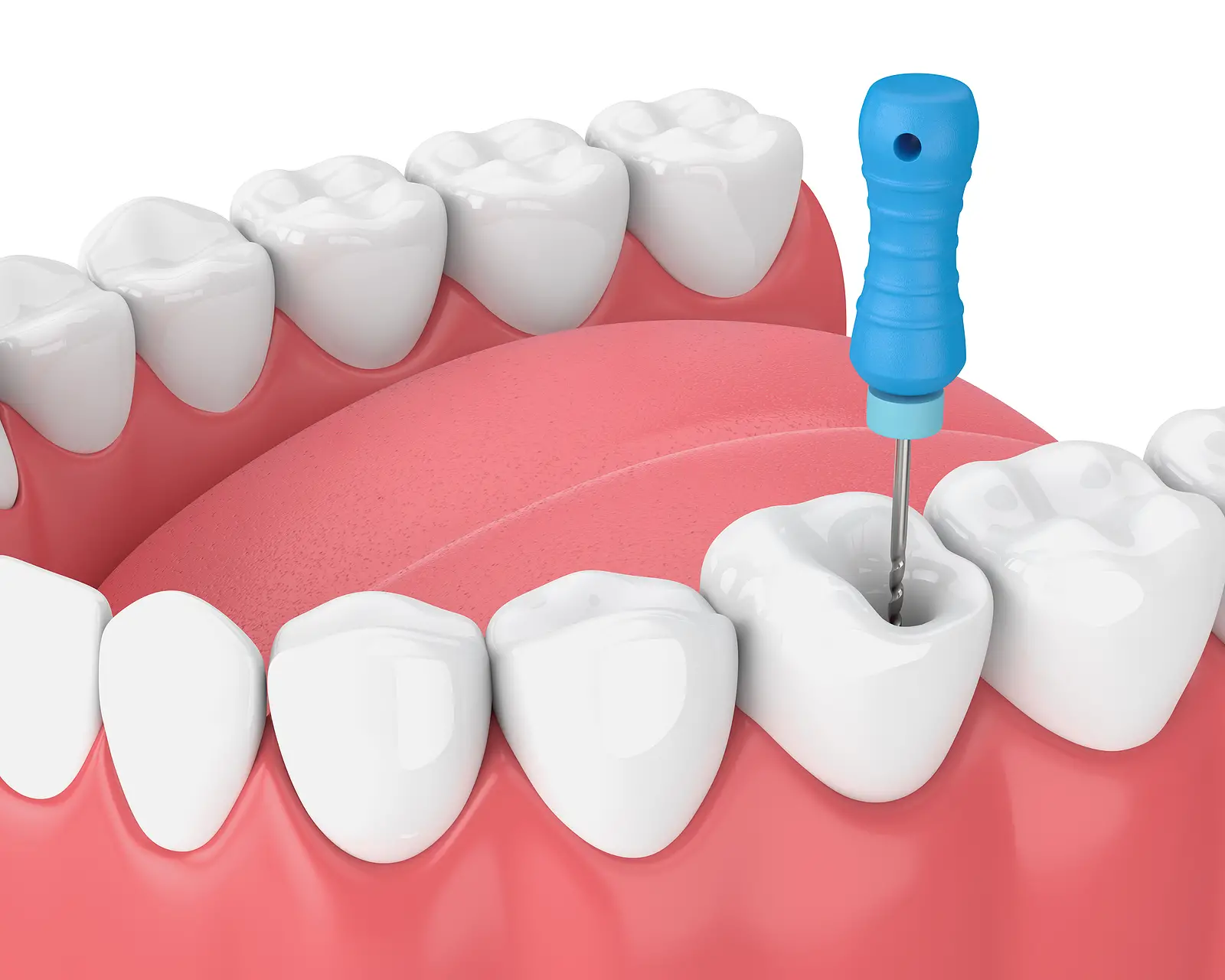
Is that persistent toothache driving you up the wall? Are you experiencing sensitivity to hot or cold foods and drinks? Or maybe your gums are swollen and tender, causing discomfort whenever you chew. If any of these sound familiar, it’s possible that you may be in need of a root canal. But what exactly is a root canal, and how do you know if it’s necessary? In this blog post, we’ll explore the telltale symptoms that could indicate the need for a root canal procedure.
What is a Root Canal?
What is a root canal, you ask? Well, let’s start with the basics. A root canal is a dental procedure that aims to save a severely damaged or infected tooth from extraction. It involves removing the pulp, which is the soft tissue inside your tooth that contains nerves and blood vessels.
So how does it work? The first step in a root canal procedure is numbing the area around the affected tooth to ensure you’re comfortable throughout. Next, your dentist will create a small access point in your tooth to reach the inner chamber where the infected or damaged pulp resides.
Once accessed, they carefully remove all traces of infected or inflamed pulp using specialized tools. This process may sound daunting, but fear not! With advancements in modern dentistry techniques and anesthesia options, getting a root canal can be virtually pain-free.
After removing the diseased pulp, your dentist will clean and disinfect the empty space within your tooth before filling it with a rubber-like material called gutta-percha. This ensures that no bacteria can re-enter and cause further damage.
To complete the procedure, your dentist will restore strength and functionality to your treated tooth by placing a crown or filling over it. And voila! Your once-troubled tooth can now continue its duty of helping you enjoy all those delicious foods without causing any more discomfort.
Remember – if you suspect that you might need a root canal, don’t delay seeking professional advice. Early intervention can prevent further complications and potentially save your natural teeth from being lost forever.
How Does a Root Canal Work?
When it comes to dental procedures, the thought of a root canal may send shivers down your spine. But fear not! A root canal is actually a procedure that can save your tooth and alleviate pain caused by infection or damage.
So, how does a root canal work? Let’s break it down.
First, the dentist will numb the area around the affected tooth with local anesthesia to ensure you are comfortable throughout the procedure. Then, they will create an access point in the tooth by drilling a small hole. This allows them to reach the infected pulp inside.
Next comes the important part – removing that infected pulp! The dentist carefully cleans out all damaged tissue and bacteria from within the tooth using specialized tools. This step helps prevent further spread of infection and promotes healing.
Once cleaned, your dentist will shape and disinfect the empty space left behind. Afterward, they fill up this space with a rubber-like material called gutta-percha to seal off any potential entry points for bacteria.
To restore strength and function to your treated tooth, a crown or filling is usually placed on top of it after some time has passed since treatment completion.
Now that you know how a root canal works, don’t let fear hold you back from seeking treatment if needed. Remember: early intervention can save your natural teeth!
5 Telltale Symptoms of Needing a Root Canal
Are you experiencing persistent tooth pain that just won’t go away? It could be a sign that you need a root canal. Root canals are dental procedures used to treat infections and save damaged teeth. But how do you know if you really need one? Here are five telltale symptoms that may indicate the need for a root canal.
1. Persistent Toothache: If you have a toothache that doesn’t subside even after taking over-the-counter painkillers, it’s time to see your dentist. This continuous throbbing or sharp pain is often caused by an infection in the tooth pulp, which can be resolved with a root canal procedure.
2. Sensitivity to Temperature:Do hot or cold foods and drinks cause intense discomfort or shooting pains in your teeth? This heightened sensitivity could be due to nerve damage inside the tooth, indicating the need for a root canal treatment.
3. Gum Swelling and Tenderness: Inflamed gums around a specific tooth can signal an infected pulp. You may notice swelling, redness, and tenderness around the affected area. If left untreated, this infection can spread and lead to more serious oral health problems.
4. Discoloration of the Tooth: A discolored tooth may suggest internal damage or decay requiring intervention through root canal therapy. The affected tooth might appear darker than surrounding teeth as blood vessels within it become compromised.
5. Prolonged Sensitivity After Dental Procedures:While some sensitivity after dental work is normal, if it lingers for an extended period (days or weeks), it could indicate deeper issues such as inflamed nerves requiring endodontic treatment like a root canal.
Remember, these symptoms should not be self-diagnosed but rather evaluated by your dentist, who will perform necessary tests and X-rays to determine if further intervention like a root canal is necessary.
Conclusion
A root canal is a dental procedure that is used to treat an infected or damaged tooth. It involves removing the pulp and nerve from the inside of the tooth, cleaning and disinfecting it, and then sealing it off to prevent further infection.
If you experience any of the telltale symptoms mentioned in this article – persistent toothache, sensitivity to hot and cold temperatures, swelling or tenderness around the affected area, gum discoloration or abscesses – it may be an indication that you need a root canal.
It’s important not to ignore these symptoms as they can worsen over time and lead to more serious complications. If you suspect that you might need a root canal, don’t hesitate to schedule an appointment with your dentist. They will be able to evaluate your condition and recommend the appropriate treatment.
Remember, early detection and intervention are key when it comes to maintaining good oral health. Regular dental check-ups can help identify any potential issues before they become major problems. So take care of your teeth and seek professional advice if you’re experiencing any concerning symptoms.




